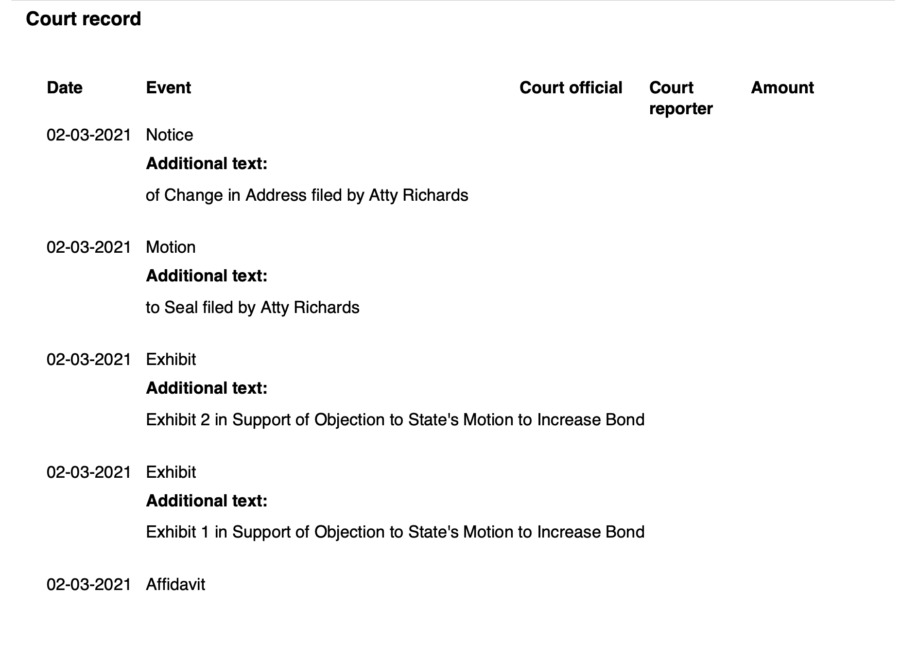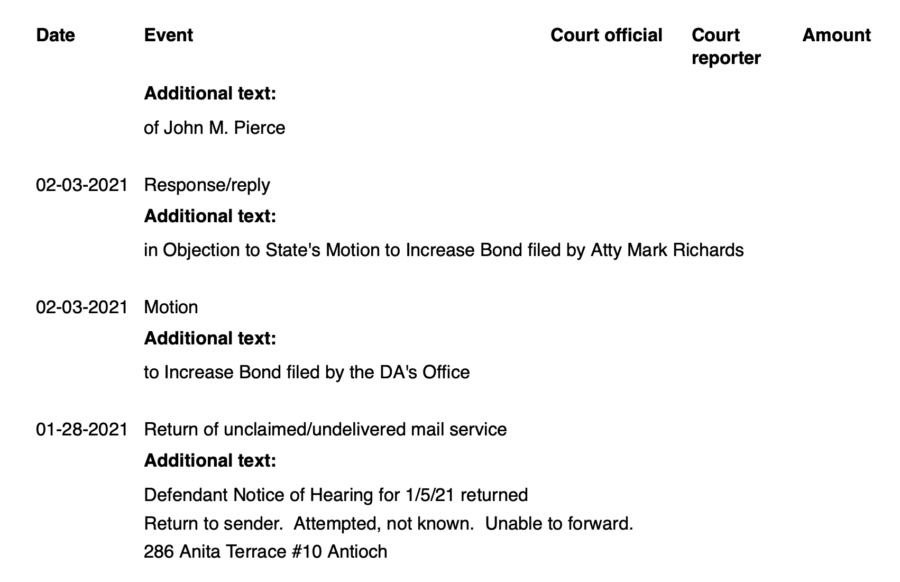
Prosecutors apparently couldn’t find admitted Kenosha killer Kyle Rittenhouse, so now they are seeking a warrant for his arrest.
On Wednesday, the Kenosha County District Attorney’s office said Rittenhouse had violated the conditions of his release. Prosecutors said they need a new arrest warrant specifically because Rittenhouse failed to inform the court after changing his address. The defense, however, responded by saying they intentionally concealed Rittenhouse’s true whereabouts because a local police captain instructed them to lie about where he was staying.
Law&Crime surveyed the court docket and found the alleged incongruity in the form of a mailed court document that apparently never made it to Rittenhouse’s last known address.
The docket notes:
Return of unclaimed/undelivered mail service
Additional text:
Defendant Notice of Hearing for 1/5/21 returned
Return to sender. Attempted, not known. Unable to forward.
286 Anita Terrace #10 Antioch
According to the conditions of his bond, Rittenhouse was supposed to relay such a change within 48 hours of moving. The motion asks Judge Bruce E. Schroeder to issue a new arrest warrant and increase Rittenhouse’s bail by $200,000.
In a Wednesday motion, prosecutors said the court was unable to deliver a hearing notice for Rittenhouse at the address he listed on his home release documentation. That notice quickly came back to the court due to a lack of forwarding address.
That led to a heretofore summarized flurry of filings Wednesday as seen in the online circuit court docket.


Rittenhouse posted $2 million bail in November 2020–most of which was raised via online donations due to his almost instantaneous status as a folk hero and cause célèbre among American conservatives after a series of high-profile August 2020 shootings. While Rittenhouse supporters are apparently drawn to him due to his apparent militia connections and because they believe he acted in self-defense, others view Rittenhouse as a domestic terrorist.
The Illinois teenager was charged with first-degree intentional homicide, first-degree reckless homicide, attempted homicide, and two additional felonies over the admitted shooting deaths of Joseph Rosenbaum and Anthony Huber. Rittenhouse also severely wounded Gaige Grosskreutz with a rifle carried across state lines. He further faces one misdemeanor charge of possession of a dangerous weapon by a person under the age of 18. Rittenhouse was 17 at the time of the August shooting and is now 18.
Rittenhouse’s defense team argues that he acted in self defense and therefore did not commit a crime on the night in question. A self-defense argument necessitates admitting the underlying action was factually committed by whomever attempts to argue the defense. Here, this means Rittenhouse and his lawyers don’t plan to dispute that he shot and killed two people while injuring a third–just that his actions were legally both permissible and justified due to the circumstances surrounding the violent confrontations.
Law&Crime reached out to Rittenhouse’s attorney Mark D. Richards for reaction and clarification about his client’s whereabouts.
In response, Richards provided a series of court filings in opposition to the state’s motion to increase the bond amount. Attached to that motion is an email which appears to document one graphic and sexually-explicit death threat Rittenhouse received late last month. Another document contained in the motion is an affidavit from Rittenhouse’s former attorney John M. Pierce which outlines the heart of the defense’s argument against increasing the bond amount.
In sum, the defense says it intentionally wrote the wrong address on the release papers after being advised to do so by local law enforcement. This, the defense claims, was to protect the location of a “safe house” for Rittenhouse.
The motion notes [emphasis in original]: “Pierce was directly informed by a high-ranking member of the Kenosha Police Department not to provide the address of the Rittenhouse Safe House because of the numerous threats made against Kyle and his family.”
“Due to threats made against Kyle, I was concerned for his immediate safety while transitioning out of police custody after his bond was posted. Because of these concerns, I coordinated Kyle’s release with Captain Bill Beth of Kenosha County Sheriff’s Office several days prior to actually posting his bond,” Pierce’s affidavit notes. “After arriving at the Public Safety building, I reported to Joint Services and tendered the personal bond amount for Kyle. I was instructed to fill out a form and provide Kyle’s personal information, including his address and social security number.”
“While I was completing this form, I was approached by a Kenosha Police Department Captain, who offered his assistance,” Pierce continued [emphasis in original]. “I asked the Kenosha Police Captain what address to put on the form. The Kenosha Police Captain told me that I ‘absolutely should not‘ provide the address of the physical location of the Rittenhouse Safe House on the form, but to instead provide his home address in Antioch, Illinois.”
The police department disputes that the conversation occurred the way the defense claims.
The department on Thursday said Pierce, the former lawyer, did speak with a member of the department, but that Wednesday’s defense filings misidentify the man’s rank and name.
“A Kenosha Police captain did have a brief conversation with Mr. Pierce, regarding security concerns raised by Mr. Pierce, surrounding the Kyle Rittenhouse release from custody,” the police department’s statement reads. “The conversation did not include instructions about how to fill out paperwork. It is the responsibility of the defendant and his/her representation to complete bond paperwork completely and accurately. It is the further responsibility of the defendant to comply with conditions of bond.”
The Wednesday defense motion also contains an email exchange from late November 2020 that outlines a previous denial of the defense’s request to file a change of address for Rittenhouse under seal due to Wisconsin’s “proud history of open records and government transparency.”
The defense motion sums up that correspondence:
On November 30, 2020 Attorney Corey Chirafisi, on behalf of the Rittenhouse defense team, contacted [Assistant District Attorney] Thomas Binger via email to discuss providing the court with Kyle’s new address. There, Attorney Chirafisi asked ADA Binger if he would agree to allow this information to be filed under seal due to concerns about the safety of the Rittenhouse family, should their location become available to the public. ADA Binger refused.
Rittenhouse’s motion goes on to allege that Binger was aware Rittenhouse no longer lived in Antioch, Ill. as of early November 2020.
Read the defense’s full motion below:
[image via Antioch, Ill. Police Department]
Editor’s note: this article has been updated post-publication to include a response from the Rittenhouse defense team and to add more information about the Kyle Rittenhouse “safe house” aspect of this controversy. The headline has been updated accordingly. This article was updated yet again on Thursday to include the Kenosha Police Department’s denial of assisting Rittenhouse.
Have a tip we should know? [email protected]